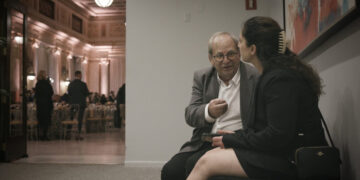AI is turning expertise into a commodity. Box CEO says there’s one way companies can stay ahead.
Box CEO Aaron Levie says that as AI makes expert knowledge universal, companies will win or lose based on how...
This action before ICE killing blows apart key claim by Trump and Noem: journalist
A fuming Jonathan Lemire thoroughly dismantled what he determined to be lies by Donald Trump and DHS Secretary Kristi about...
At 70, she embraced her Chumash roots and helped revive a dying skill: basketmaking
Around 1915, the last known Chumash basket maker, Candelaria Valenzuela, died in Ventura County, and with her went a skill...
‘All That’s Left of You’ Review: Hearts, Minds, History
In the writer-director Cherien Dabis’s generation-spanning drama “All That’s Left of You,” two friends, Noor (Muhammad Abed Elrahman) and Malek...
Lebanon Claims Progress in Disarming Militant Groups Like Hezbollah
The Lebanese military said on Thursday that it had completed the first phase of a plan to disarm militant groups...
Nostalgia for American Hypocrisy
Two decades ago, Richard N. Haass, a senior foreign-policy official in the George W. Bush administration, confessed that he would...
The Scientists Making Antacids for the Sea to Help Counter Global Warming
A few months ago, the oceanographer Adam Subhas and his colleagues turned the sea red. At first it looked as...
Exclusive: Cyera CEO Yotam Segev on raising $400 million and why the stakes in cybersecurity are getting higher
Less than five years ago, Yotam Segev cofounded Cyera to solve the practical, enterprise-scale problem of data security. Then, the...
Yes, California should tax billionaires’ wealth. Here’s why
That shrill, high-pitched squeal you’ve been hearing lately? Don’t bother trying to adjust your TV or headphones, or calling your...
‘Dead Man’s Wire’ Review: When the Action Is Razor Thin
For “Dead Man’s Wire,” Gus Van Sant appears to have proceeded from the notion that somebody ought to make a...














